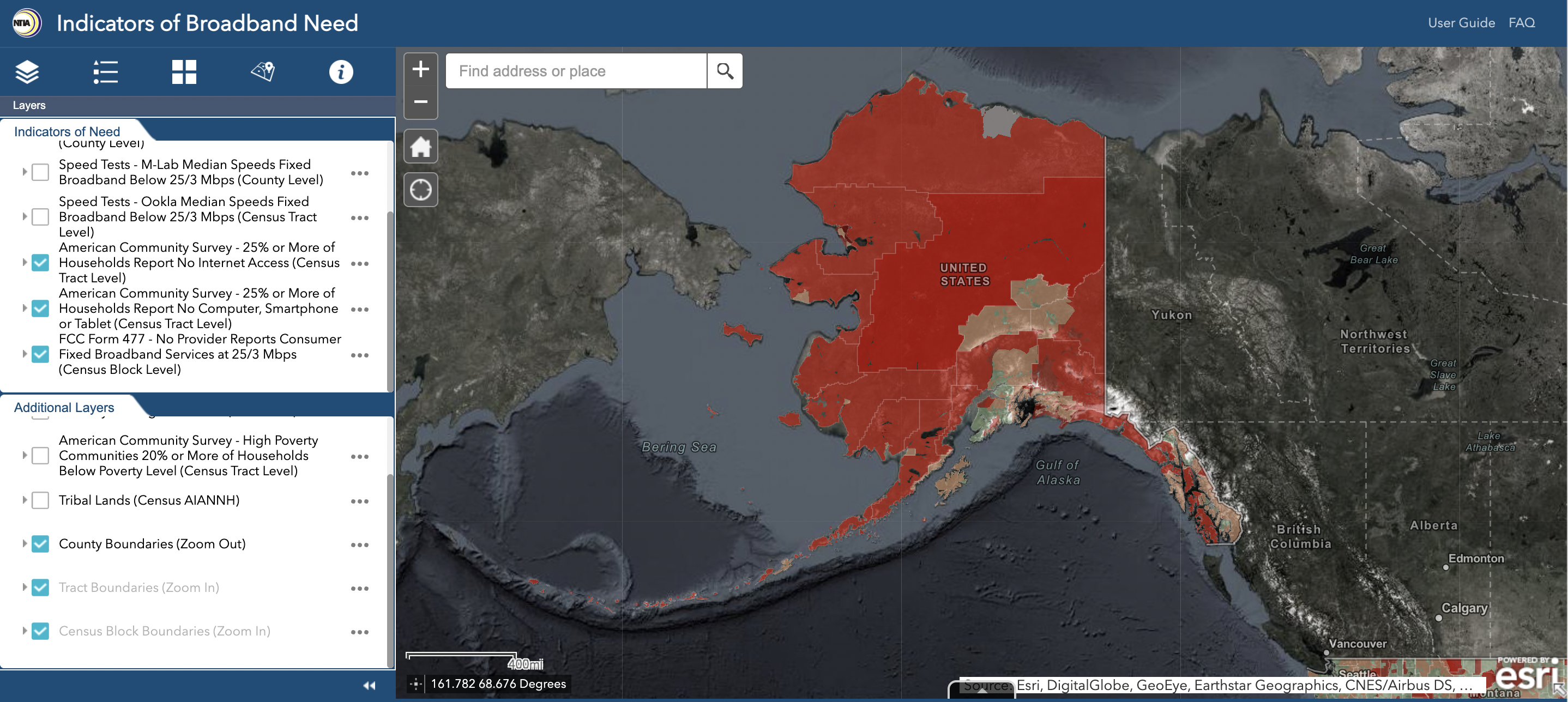
- Details
- By Valerie Vande Panne
The Department of Commerce’s National Telecommunications and Information Administration (NTIA) announced today it has awarded three grants as part of the Tribal Broadband Connectivity Program. These grants of $500,000 each are being awarded to the Confederated Tribes of Siletz Indians in Lincoln, Ore., and two Alaska Native villages: the Village of Clarks Point and the Native Village of Selawik.
The two Alaskan grants will fund broadband use and adoption projects, while the Confederated Tribes of Siletz Indians will use their grant for a planning study, a crucial step in the connectivity process. NTIA has now made a total of seven awards, totaling about $4 million in funding, through the Tribal Broadband Connectivity Program.
“These grants will help tribal communities connect so they can work remotely, access medical care, and communicate with friends and family,” said Alan Davidson, Assistant Secretary of Commerce for Communications and Information. “In the months to come, the Tribal Broadband Connectivity Program will continue to roll out resources so we can close the digital divide on tribal lands.”
Want more Native News? Get the free daily newsletter today.
The Tribal Broadband Connectivity Program, which was funded by the Consolidated Appropriations Act of 2021, makes $980 million available for grants to eligible Native American, Alaska Native, and Native Hawaiian entities for broadband deployment, digital inclusion, distance learning, telehealth, and workforce development.
The grant to the Village of Clarks Point is meant to provide all tribal members negatively impacted by COVID-19 with access to technology and Internet services at no cost, while the grant to the Native Village of Selawik is meant to provide affordable broadband services through payment assistance programs to new and existing subscribers. It will also provide some tribal members seeking to re-enter the workforce with laptops or tablets.
The recently enacted Bipartisan Infrastructure Law provides an additional $2 billion in funding for this program, as part of an historic $65 billion investment to expand broadband in communities across the U.S.
NTIA is preparing to launch a series of new broadband grant programs that intends to build broadband infrastructure across the country, create more low-cost broadband service options, and address the digital equity and inclusion needs.
Additional broadband funding may be available through the Department of Treasury’s American Rescue Plan Funds. The BroadbandUSA Federal Funding Guide also compiles federal funding opportunities for expanding and improving broadband access.
More information about the Tribal Broadband Connectivity Program can be found on the BroadbandUSA website.
NTIA will announce additional awards on a rolling basis as they go through the Department of Commerce’s review process.
More Stories Like This
Native News Weekly (August 25, 2024): D.C. BriefsUS Presidents in Their Own Words Concerning American Indians
South Dakota Hotel Owner Found Liable for Discriminating Against Native Americans
Monday Morning (December 22, 2025): Articles You May Have Missed This Past Weekend
Read What Our Year-End Campaign Donors Are Saying
Help us defend tribal sovereignty.
At Native News Online, our mission is rooted in telling the stories that strengthen sovereignty and uplift Indigenous voices — not just at year’s end, but every single day.
Because of your generosity last year, we were able to keep our reporters on the ground in tribal communities, at national gatherings and in the halls of Congress — covering the issues that matter most to Indian Country: sovereignty, culture, education, health and economic opportunity.
That support sustained us through a tough year in 2025. Now, as we look to the year ahead, we need your help right now to ensure warrior journalism remains strong — reporting that defends tribal sovereignty, amplifies Native truth, and holds power accountable.
 The stakes couldn't be higher. Your support keeps Native voices heard, Native stories told and Native sovereignty defended.
The stakes couldn't be higher. Your support keeps Native voices heard, Native stories told and Native sovereignty defended.
Stand with Warrior Journalism today.
Levi Rickert (Potawatomi), Editor & Publisher
